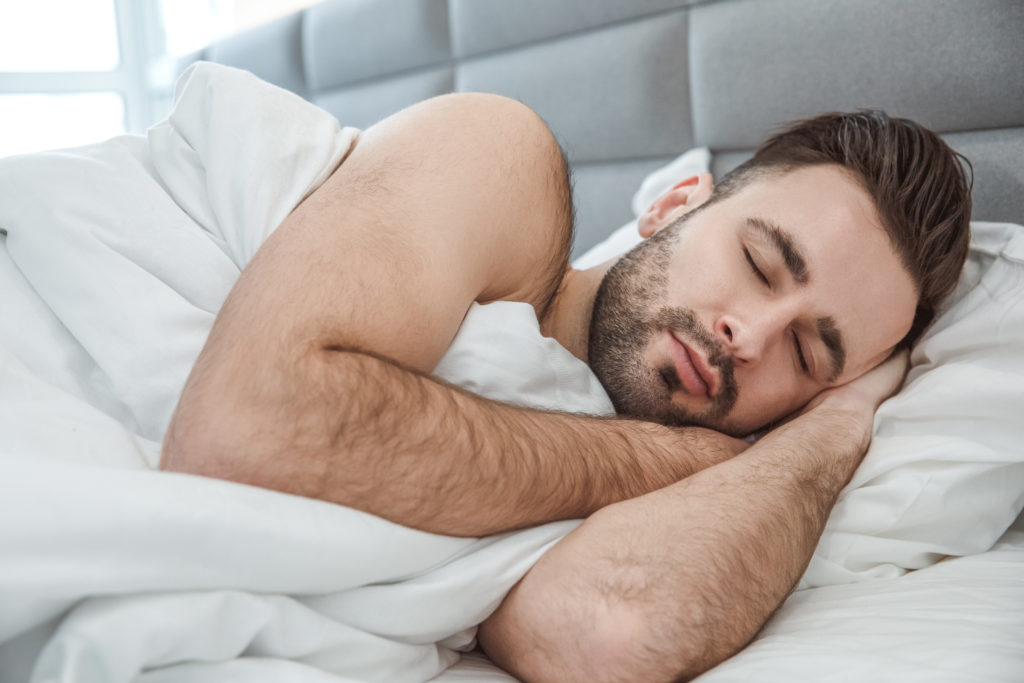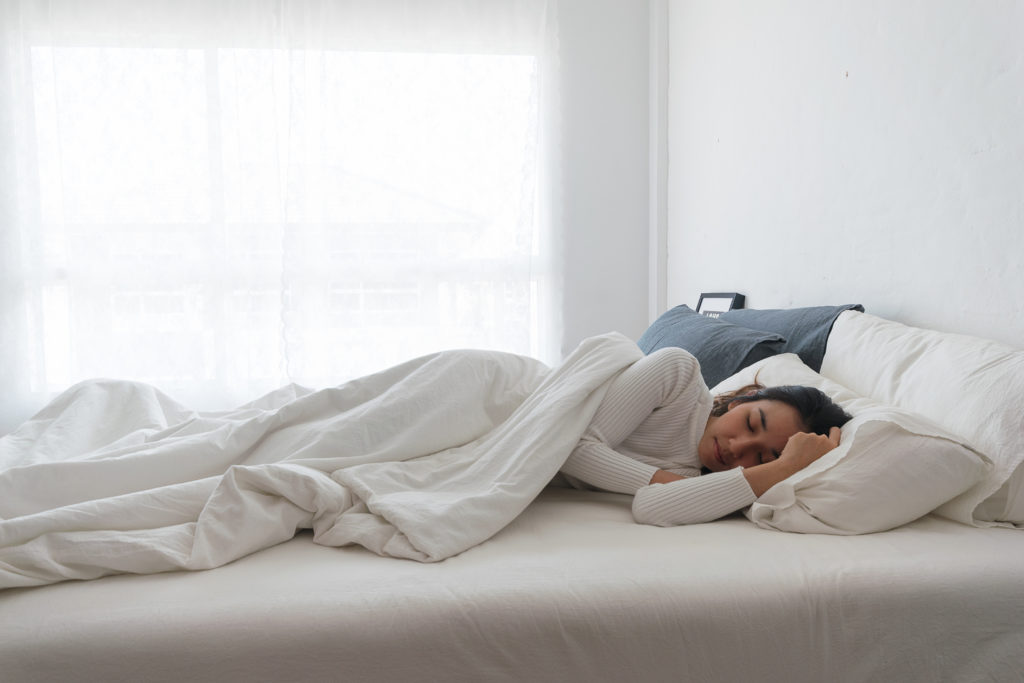Our sleeping position is one of our oldest habits. You might not think much about how your body is positioned as you lay down to go to sleep; however, a healthy sleep position is one of the most critical factors in a good night’s sleep and overall sleep health especially if you have sore shoulders.
If your spine is out of alignment when you sleep, or you are putting too much pressure on specific areas of your body, you’re likely to wake up with aches and pains. Sleeping in unhealthy positions may also prevent you from feeling well-rested.
Benefits of Sleeping on the Side

Is it bad to sleep on your stomach or back? In short, no. A stomach sleeper or someone who sleeps in other positions can still have a healthy sleep as long as they do not put unnecessary strain or pressure on their body.
However, if you’re experiencing sleep apnea, back pain, other discomforts, or wondering, “How should I sleep with neck pain?” consider switching to your side.
Side sleeping is a very healthy way to sleep and is preferred by most adults. Resting on your side helps your spine stay in natural alignment, preventing aches and pains, and contributing to your overall health. Additionally, if you are pregnant, side sleeping improves circulation and prevents your growing baby from pressing on your other organs.
If you are considering switching to side sleeping, or want to maximize your side sleeping experience, here are a few tips to get a better night’s sleep and prevent aches and pains.
Tips for Sleeping on Your Side
Sleep on Your Left Side
You may be wondering, “Is sleeping on the left side bad for your heart?” The answer is no. In fact, if you are a side sleeper, you should actually consider sleeping on your left side. Because of your anatomy and organ position, sleeping on your left can help alleviate acid reflux and heartburn, encourage healthy digestion, and improve circulation and stimulate lymph node drainage.
However, no one side is technically bad for sleeping, and staying in one position too long can cause aches and pains. If you’re a side sleeper, switch up the side from time to time to prevent any unnecessary pressure points.
Align Your Spine
Regardless of sleeping position, spinal alignment is crucial for sleep health and spinal health. When you’re laying down to go to sleep, make sure your ears, shoulders, and hips are in-line to ensure proper alignment.
Use pillows or cushions to support gaps between your body and the bed that can strain your muscles and cause your spine to be out of alignment. Additionally, be careful while turning in bed, as these twisting motions can impact proper alignment. Bringing your knees toward your chest as you roll over can help prevent any strain on your spine while adjusting positions.
Use a Supportive Pillow for Your Head
For a comfortable, healthy sleep, side sleepers should use thicker pillows that support and fill the space between their head and neck. However, pillows that are too thick can also impact the spinal alignment and create pressure points.
“Loft” refers to the thickness of pillows, and a medium loft pillow is the most ideal for side sleepers. They provide enough cushion and support for the head or neck without causing your head to sink too low or feel too tall. Additionally, pillows made with solid foam or latex cores tend to provide the most sleep support for side sleepers, keeping your head from sinking or being excessively elevated.
Sleeping With a Pillow Under Knees

Sleeping on the same side every night creates pressure points on your back, hips, and legs, leading to aches and pains. One way to relieve these pressure points is to sleep with a pillow between your knees.
When you sleep on your side, the side of your body you are sleeping on is supporting the weight of the opposite side. This creates a “buckled-leg” stance in your hips and legs, which can cause joint pain. Putting a pillow between your knees is an easy way to correct and straighten your spine into healthy alignment, reducing the pressure in your back and hips, and helping you sleep better.
Takeaway
Side sleeping is one of the most popular sleeping positions, and there are many benefits to sleeping on your side. However, if you are a side sleeper, be sure you are maintaining correct alignment while sleeping to ensure proper spinal health.


